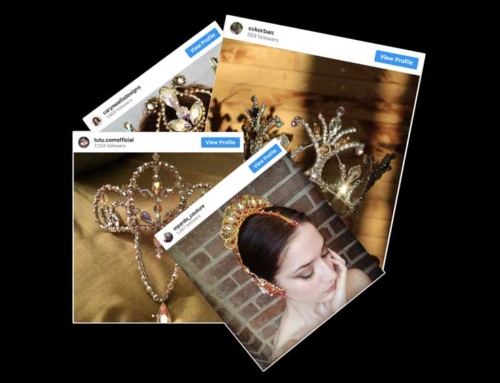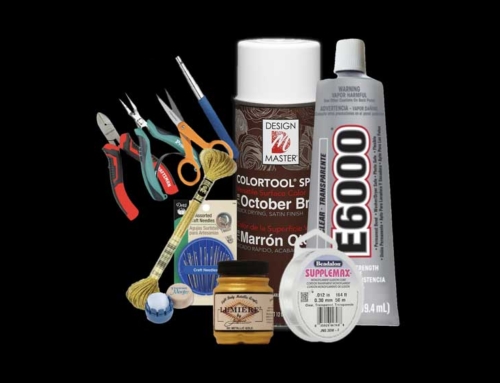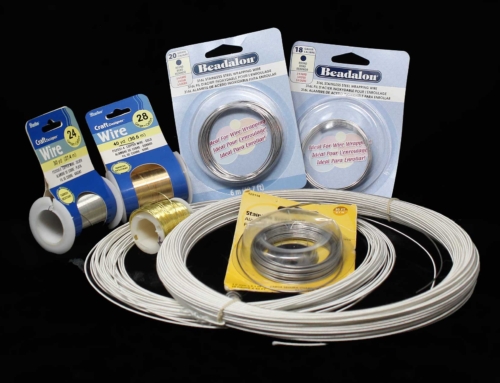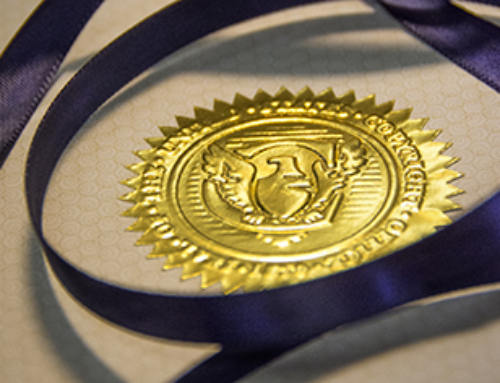Copyright in the United States
The heading above contains a link to chapter 300 of copyrightable authorship from the United States Copyright office. Other links to different chapters are provided through this text.
Obligatory notice: I am not a lawyer; this is not legal advice. Please contact an attorney if you really want to know if your work is protected or how to enforce your rights!
I really like this over-all great, short concise version of copyright basics — you should read this
Copyright protects original works of authorship fixed in any tangible medium of expression, now known or later developed, from which they can be perceived, reproduced, or otherwise communicated, either directly or with the aid of a machine or device.
Creators in the United States have a sense of entitlement because of the automatic copyright granted to them. Automatic copyright means a work is “copyrighted” when it is fixed — or created — such as when a jewelry designer makes a pendant. The assumption that the creator has is that no one can make something similar or make an exact copy. However, that is not always true! To enforce your copyright — or take legal action — your work has to be registered. For your work to be granted a copyright registration, it has to met standards.
- It must be original — display minimal degree of creativity
- and created independently
- It must be fixed – you have to have created a thing that is copyrightable
Originality Requirement
To qualify for copyright protection, a work must be original to the author,” which means that the work must be “independently created by the author” and it must possess “at least some minimal degree of creativity.” Id. at 345 (citations omitted).
The U.S. Copyright Office will examine each work in isolation to determine whether it satisfies the originality requirement. The fact that a work may be novel, distinctive, innovative, or even unique is irrelevant to this analysis. See H.R. Rep. No. 94-1476, at 51 (1976), reprinted in 1976 U.S.C.C.A.N. at 5664 (stating “the standard of originality established by the courts … does not include requirements of novelty [or] ingenuity” and that Congress did not intend “to enlarge the standard of copyright protection” to impose these requirements). As discussed in Section 308 “originality requires independent creation plus a modicum of creativity.” Feist, 499 U.S. at 346. The author’s expression does not need to be novel, and it does not need to “be presented in an innovative or surprising way.” Id. at 362; see also L. Batlin & Son v. Snyder, 536 F.2d 486, 490 (2d. Cir. 1976) (“Originality is … distinguished from novelty; there must be independent creation, but it need not be invention in the sense of striking uniqueness, ingeniousness, or novelty”). A work of authorship may be original, even though it is neither new nor inventive or even if “it closely resembles other works.” Feist, 499 U.S. at 345 (explaining that “[o]riginality does not signify novelty”). Conversely, the fact that a work is new, innovative, or even unique does not necessarily mean that it contains a sufficient amount of creative expression to satisfy the originality requirement.
Some key take-ways are:
Novelty and originality are not the same thing. Two authors can register the same thing if they created it independently. So, when you are internet surfing and complaining so-and-so copied so-and-so and getting all worked up over copycats, you are ignoring one thing that the law recognizes — two people can create the same thing and not be doing something wrong. Original does not mean unique. You may try look at the date in which the item was shared online to see who posted first; however, the date an item is posted does indicate the date the author started to form the work. You cannot assume the first date posted represents the first work created. First to social media does not mean first to create — or that someone could have the idea independently.
Secondly, the work must display some minimal level of creativity. Just because you are the first person you know of to make a necklace with an open circle on it, does not mean it will meet the minimal level of creativity. The law recognizes that some things are too generic to be granted a copyright. In this case, a simple geometric shape on a necklace will not meet this minimum standard. The law does not protect first to market; it protects original works of authorship regardless if it is similar to something already created. In fact, the copyright office does not search past registrations to see if there is something similar already registered. It may be a hard pill to swallow, but your beautiful work is not creative enough. The public has misconstrued first to market with originality. Bringing an unoriginal idea to market first does not make it an original creation. Calling someone a copycat of something unoriginal — made of common place design tropes — simply, in my opinion, displays the accusers ignorance. Then there is the reaction … but that is MY STYLE.
As much as it may hurt feelings, cause someone distress, or anger someone you cannot copyright style, or look and feel. Just because a design may have the aesthetic or look of another designer, doesn’t mean it is infringing — or even unoriginal. Having style — having a look and feel — does not make an artist’s work original. There are many people out there that can have the same style. In fact, our society encourages copycatting style. Have you ever updated your wardrobe because it was out of style; how about a remodel of your home to be more in style with the current market? Ever criticized someone because they are weird–dresses or adorns themselves in unique ways? The issue with some creators is their artistic identity is derived from one particular style. Often times, they mistakenly think that style makes them personally unique; and to maintain their self-worth that there cannot be anyone else like them.
There are NUMEROUS elements that are not copyrightable. These are found in chapter 906 and includes some of my favorite design elements: geometric shapes and familiar symbols and designs. The most applicable section relating to jewelry design, 908.3, specifically stating that common symmetrical arrangements are not copyrightable as well as
When evaluating the copyrightability of a jewelry design, the specialist may consider the number of elements in the design. More elements may weigh in favor of copyrightability, although a work containing multiple elements may be uncopyrightable if the elements are repeated in a standard geometric arrangement or a commonplace design. A work containing only a few elements may be copyrightable if the decoration, arrangement, use of color, shapes, or textures are sufficient to support a claim.
Denied Copyrights for Jewelry Design
I invite you to read an example of a copyrights refused by the US copyright office based on the above criteria: click here, here, and here Y’all simple shapes — the ones that can make some of the coolest designs — do not met the “spark of creativity” requirement.
Another interesting problem maybe using other people’s original works in your designs. A great example would be assemblage jewelry. Artisans who practice this often take older-vintage pieces by other jewelry artists, brass elements mass-manufactured, and a host of bits and bobbles to create new work. Some of these may or may not be copyrightable works. This could be considered a collective work
However
The copyright in a compilation or derivative work extends only to the material contributed by the author of such work, as distinguished from the preexisting material employed in the work, and does not imply any exclusive right in the preexisting material. The copyright in such work is independent of, and does not affect or enlarge the scope, duration, ownership, or subsistence of, any copyright protection in the preexisting material.
It only covers your contribution….the original pieces still obtain their copyright — of which your use may or may or may not be considered transformative or fair use.
Read Next >> Attribution is not always the wise thing to do.
If you have questions regarding fair use — contact an attorney.




